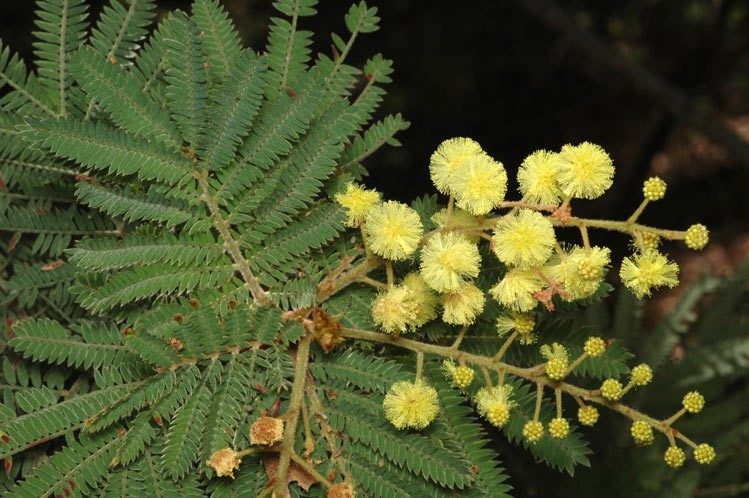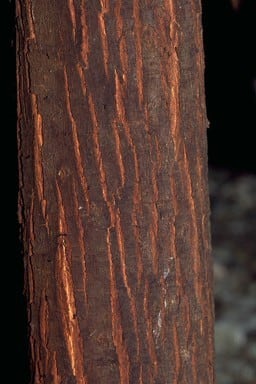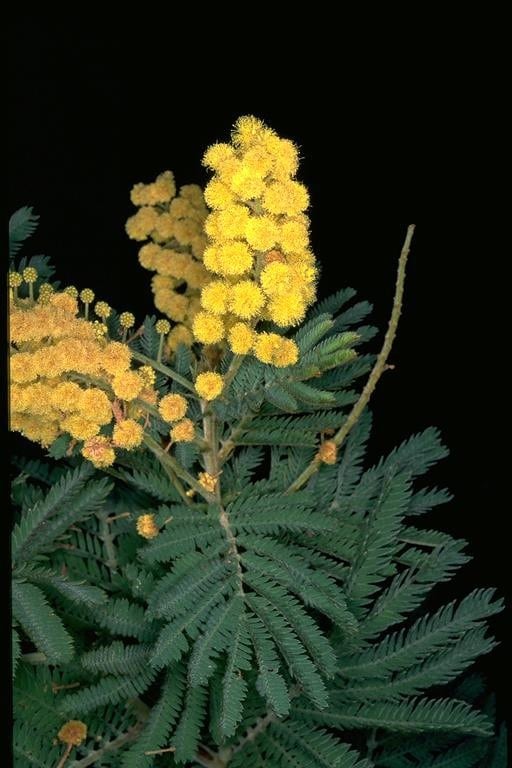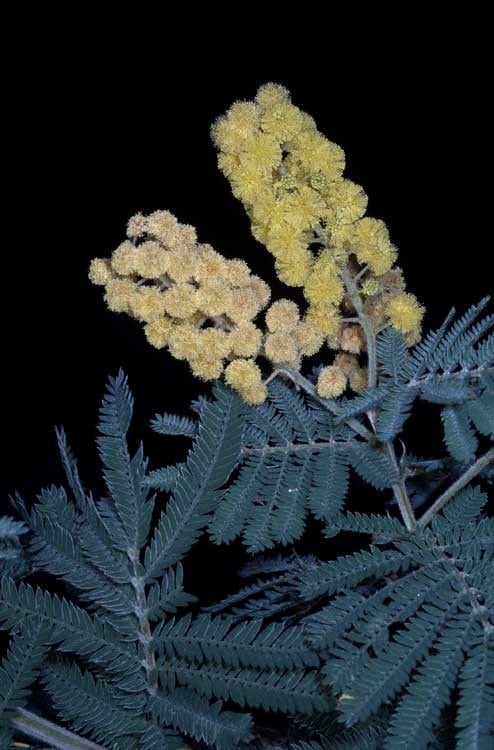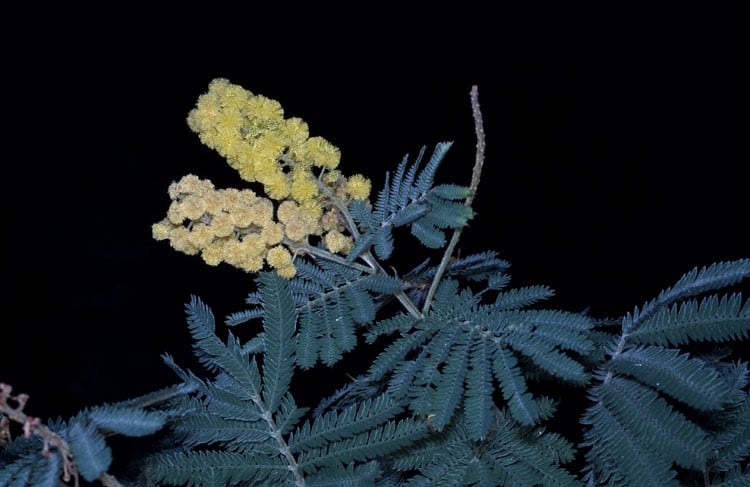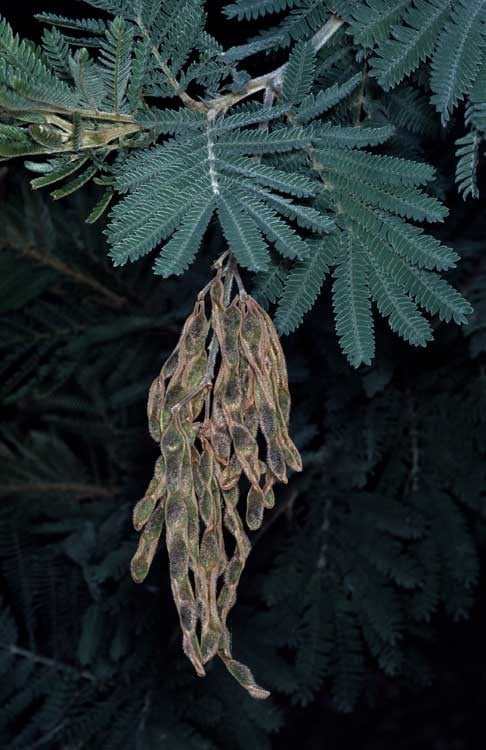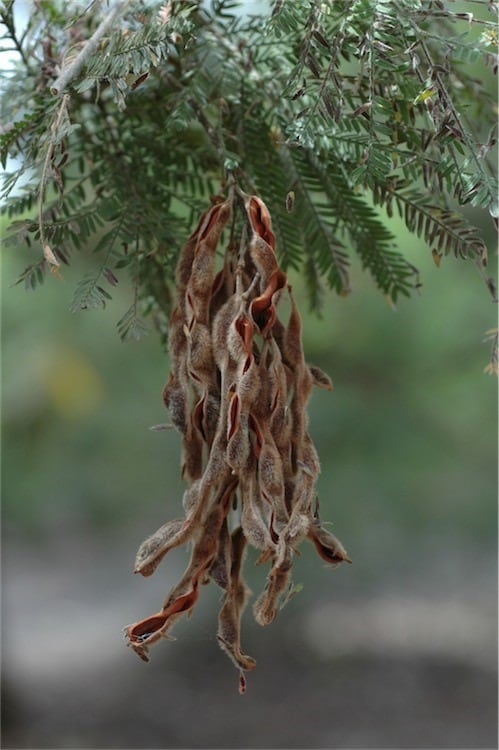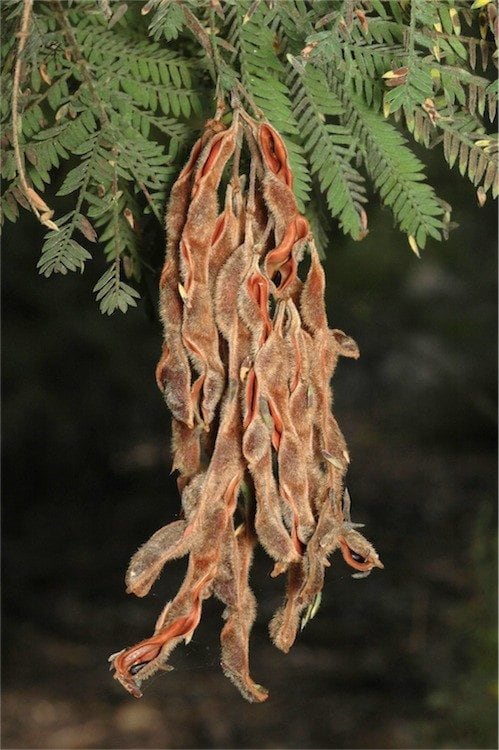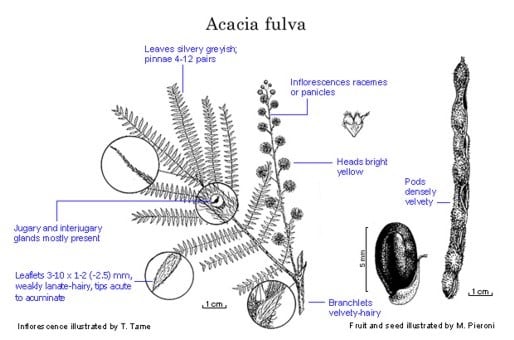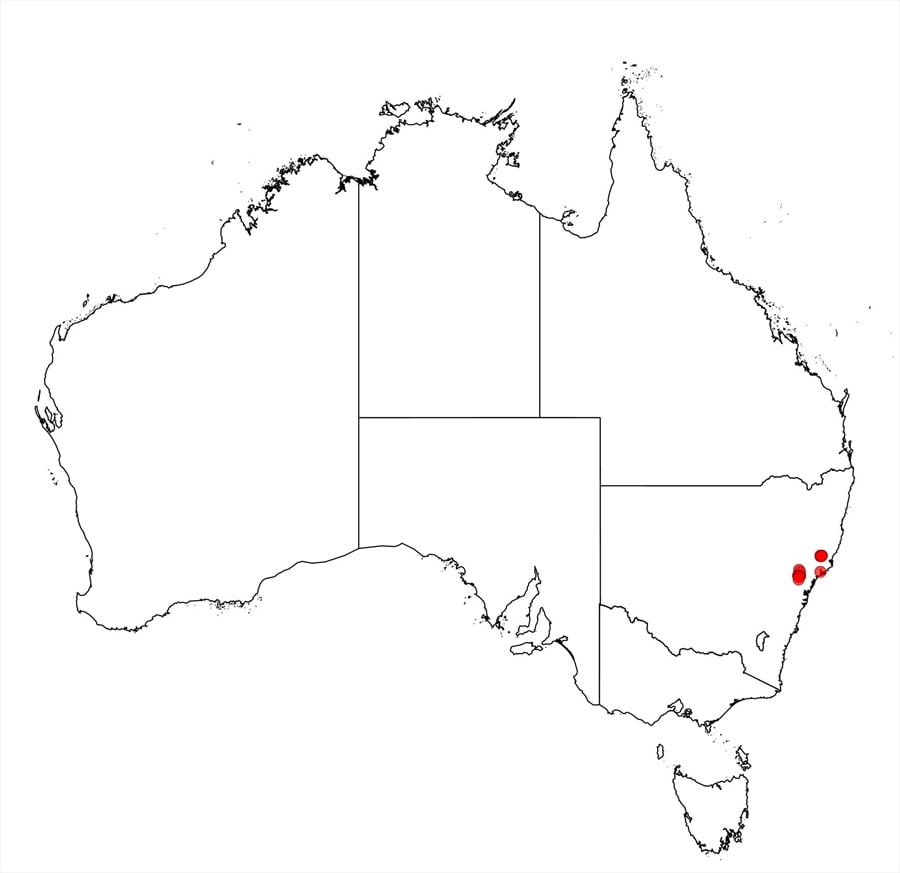Acacia fulva Tindale
WATTLE
Acacias of Australia
Common Name
Velvet Wattle, Soft Wattle
Family
Fabaceae
Distribution
Occurs in eastern N.S.W. at Gloucester Buckets, Apple Tree Flat (Hunter Valley), Hayes Ck (near Bulga), Mt Wareng and Mt Yengo (near Howes Valley).
Description
Shrub or tree 1.5–10 (–15) m high. Bark smooth and greyish green on young trees, later rough and corrugated. Branchlets with the surface and inconspicuous ridges bearing velvety, silvery grey or chestnut hairs 0.8–1 mm long. Young foliage-tips chestnut-coloured, velvety. Leaves silvery greyish; petiole above pulvinus inconspicuous or to 0.6 cm long, terete, with an orbicular gland near basal pinnae; rachis 2–8 cm long, mostly bearing 1–3 minute interjugary glands between pairs of pinnae as well as ±jugary glands often present at some pairs of pinnae; pinnae 4–12 pairs, 3–7.5 cm long; pinnules 11–28 (–35) pairs, narrowly lanceolate to ovate or narrowly lanceolate-oblong, 3–10 mm long, 1–2 (–2.5) mm wide, lanate with long weak silvery hairs on lower surface and margins, sparsely lanate on upper surface, sharply acute to acuminate. Inflorescences in axillary racemes, or terminal or axillary false-panicles; peduncles 2–13 mm long, densely hairy. Heads 20–48-flowered, bright yellow. Pods straight to slightly curved, 2–12 cm long, 4–6.5 mm wide, thickly coriaceous, dark brown, velvety with soft chestnut-coloured and silvery hairs 1–1.2 mm long.
Phenology
Flowers Nov.–June.
Habitat
Grows on basalt, shale and sandstone, often with Eucalyptus moluccana and E. tereticornis in dry sclerophyll forest, on ridges and slopes and in gullies.
Specimens
N.S.W.: Gloucester Buckets, R.G.Coveny 4609 (AD, B, BRI, CANB, K, L, MO, NSW, PERTH, RSA, TNS, UC, US, W) and G.D’Aubert 613 & P.D.Hind (NSW); Mt Wareng, E.F.Constable 4785 (BRI, L, NSW, NY, UC, US); NE slope of Mt Yengo, A.N.Rodd & B.G.Briggs (CANB, NSW77534); 1 mile [1.6 km] SSE of Howes Valley, 14 Nov. 1965, M.D.Tindale s.n. (MO, NSW, PERTH).
Notes
Maiden and Blakely included this species in their description of the very closely allied Acacia mollifolia, citing NSW8140 and NSW8141 from Gloucester and Gloucester Buckets, respectively. Acacia mollifolia has been recorded from the Central Western Slopes and one locality in the Central Tablelands, N.S.W.
In A. mollifolia the pinnules are more cultrate or linear with a rounded or truncate instead of very acute apex, the branchlets are shortly tomentose and the pods often more constricted between the seeds. Interjugary glands occur on the rachises between the pairs of pinnae in A. fulva but are absent in A. mollifolia. Both species are characterised by very similar bracteoles, but the flowers are different. The petals and the lobes of the calyx in A. fulva have a number of long, fine, weak, white hairs on their outer surfaces. The ovary in A. mollifolia is mid-brown and glabrous instead of dark brown with a tuft of long, white hairs as in A. fulva.
FOA Reference
Data derived from Flora of Australia Volumes 11A (2001), 11B (2001) and 12 (1998), products of ABRS, ©Commonwealth of Australia
Author
Minor edits by J.Reid & J.Rogers
M.D.Tindale, P.G.Kodela
This identification key and fact sheets are available as a mobile application:
URL: https://apps.lucidcentral.org/wattle/
© Copyright 2018. All rights reserved.
